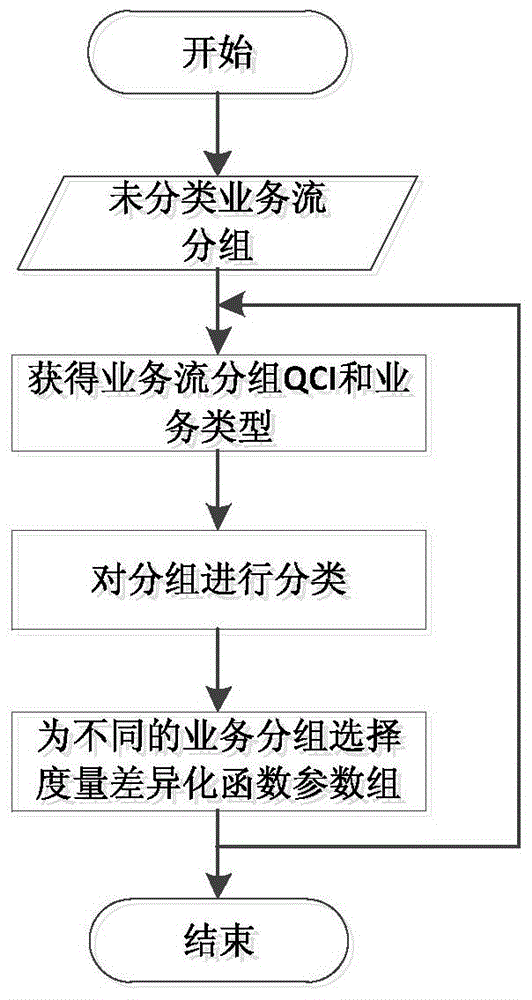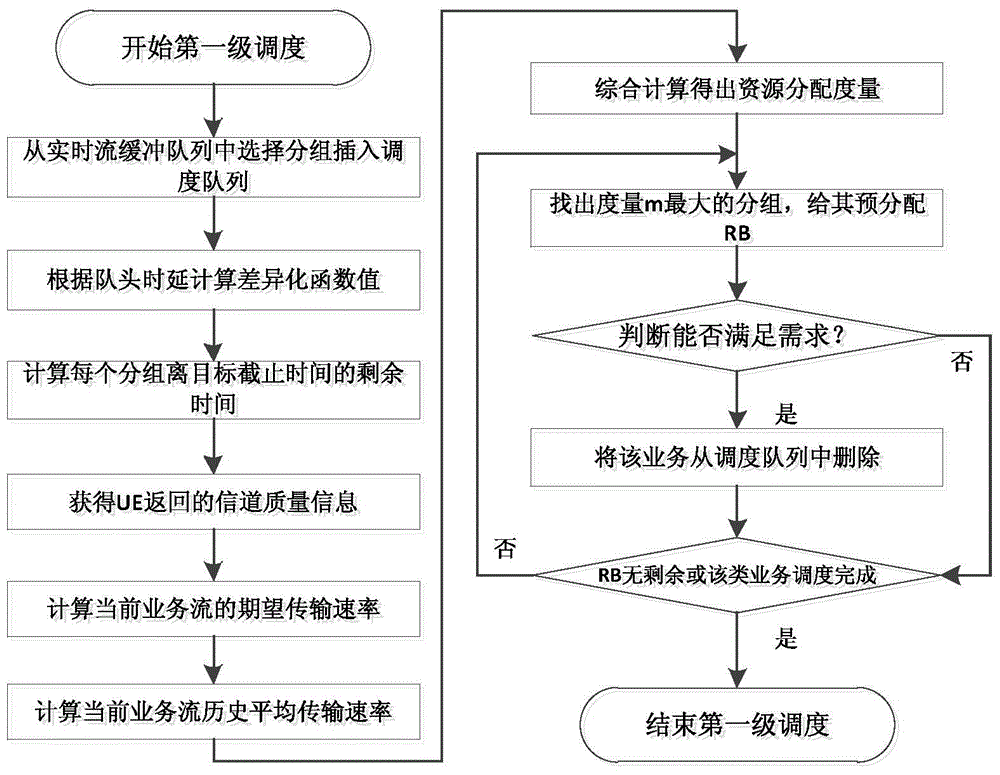Vehicle-road communication downlink wireless resource distribution algorithm
A wireless resource and vehicle-road communication technology, applied in wireless communication, electrical components, etc., can solve problems such as inability to supplement and adjust channels, difficulty in ensuring QoS requirements, and inability to prioritize data flow scheduling.
- Summary
- Abstract
- Description
- Claims
- Application Information
AI Technical Summary
Problems solved by technology
Method used
Image
Examples
Embodiment Construction
[0109] Simulation example 1:
[0110] Because TD-LTE is not an independent system, it is difficult to test and simulate the downlink scheduling algorithm. In the test, LTE-Sim is used for system-level simulation. LTE-Sim is an open-source LTE simulation software, which mainly performs system-level simulation of the scheduling algorithm in LTE, without considering the user incoming call access control function. The software realizes the complete protocol stack of LTE, and can simulate the uplink and downlink scheduling algorithms in a single cell or multi-cell environment. During the simulation process, the software takes into account the key technologies of the LTE system such as user mobility, frequency reuse technology, and AMC (Adaptive Modulation and Coding, AMC), so the simulation results using this software have high reliability.
[0111] Based on LTE-Sim, two traffic scenarios are constructed to simulate and verify the effectiveness of the algorithm. During the simul...
PUM
 Login to View More
Login to View More Abstract
Description
Claims
Application Information
 Login to View More
Login to View More - R&D
- Intellectual Property
- Life Sciences
- Materials
- Tech Scout
- Unparalleled Data Quality
- Higher Quality Content
- 60% Fewer Hallucinations
Browse by: Latest US Patents, China's latest patents, Technical Efficacy Thesaurus, Application Domain, Technology Topic, Popular Technical Reports.
© 2025 PatSnap. All rights reserved.Legal|Privacy policy|Modern Slavery Act Transparency Statement|Sitemap|About US| Contact US: help@patsnap.com



